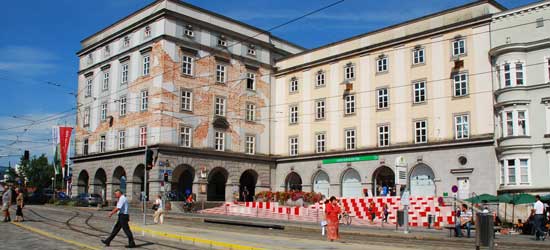The Bridgehead buildings in Linz (Austria) have a tortured history: they were built as the Fuhrermuseum, to house Adolf Hitler’s own collection of stolen art. This past year Linz celebrated as cultural capital of Europe, and a powerful series of interventions to one of these buildings sought to (literally) uncover the history of their construction. Jagged lines carved from the stucco veneer represent the paths taken by (forced) laborers brought to Linz to build the structures. Concentration camp prisoners quarried the stone while others built the foundations and interior furnishings were stolen from prisoners’ homes. A disturbing sight, to be sure, but a necessary one – if only the other museums built by slaves and filled with stolen art bore witness to their own histories.
Structural Problems
This entry was posted in art, supply chain, traceability, visualization. Bookmark the permalink. Both comments and trackbacks are currently closed.

2 Trackbacks
[…] maps remind me of the prison labor diagrams from Linz. They monumentalize migration patterns related to imprisonment and embed a morbid story in the map […]
[…] maps remind me of the prison labor diagrams from Linz. They monumentalize migration patterns related to imprisonment and embed a morbid story in the map […]